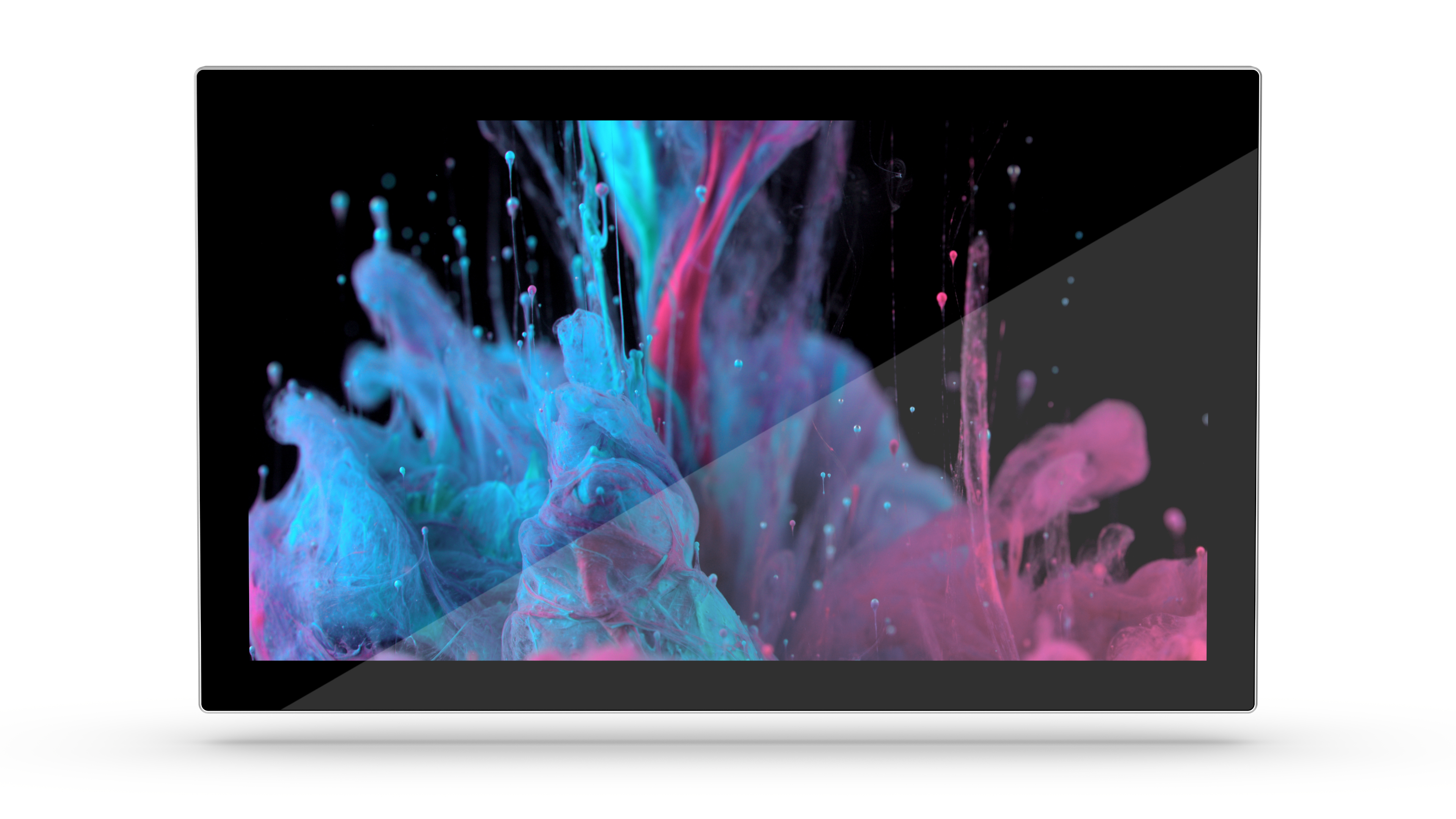There are now many touchscreen technologies. Which one is the best depends on the intended use. We briefly show how the individual technologies differ.
Resistive touch technology
It starts with resistive touch technology, the advantages of which are that it can be operated with gloves, a special pen and gloves. In addition, it was one of the most cost-effective touch technologies for a long time. Since this technology not only resists liquids or splash water, but is also dirt-resistant, it has the great advantage that it is often used in machine production and automation.
Surface capacitive touch technology
The surface-capacitive touch technology has the advantage that such applications have a significantly longer service life than resistive technology. This system consists of an extremely smooth glass layer with excellent performance and high sensitivity. No strong pressure is necessary and you can simply swipe your finger over it to operate applications such as ATMs, POS systems or in medical technology.
PCAP technology
Projected capacitive touch technology is our preferred technology because it combines many advantages. In addition to good optical quality, reliability and a long service life, it can be operated with almost unlimited multi-touch capability. Due to the long service life and the numerous possibilities for surface treatment, it can be used in industrial areas without hesitation.
Infrared touch technology
Infrared touch technology is particularly popular with large touch displays because it is infinitely scalable. In addition, such touch screens are 100% translucent and resistant to acids and alkalis. Which allows it to be used in the medical as well as industrial sector. Since you don't have to touch the surface directly with your finger, the touchscreen also works with scratches. Unfortunately, this circumstance also causes a major disadvantage: it is possible that functions are executed unintentionally. For example, through adjacent objects.
Surface Acoustic Wave (SAW)
The surface wave touch technology requires the ultrasonic surface waves as a basis. It can be used with clear glass without coating and ensures good image quality. The touch is possible both with the finger, glove or a special pen. If the glass is surface treated accordingly, vandal-proof applications for information terminals in covered outdoor areas are even conceivable. SAW touchscreen systems are often used for information appointments as well as ticket machines.
APR and DST technologies
The main advantages of Acoustic Pulse Recognition and Dispersive Signal Technology are the durability of the glass with good optical quality. You can operate such applications with your finger, a pen or even a glove. Since the technology is resistant to dirt as well as dust and water, the signs of wear and tear are low. It can be used in industrial plants, as well as information and point-of-sales terminals as well as in the catering sector.
Projected IR technology (PIT)
The great advantage of projected infrared technology is that the entire surface actively reacts to touch touches. It is ideally suited for applications in the multimedia sector, because the entire touch surface can be executed in any material and is therefore preferably used in the consumer sector.
Multi-touch technologies
Multi-touch-enabled touchscreen technologies mean two things. Namely, that 1) they can capture several touch points on the surface at the same time and transmit them to a PC and 2) that they have a controller that can process several touch points at the same time. This usually means that you want to work with several fingers. Such as rotating, zooming in or out, etc. Almost all of the technologies listed here meet the requirements that are necessary for multi-touch use, although not all of them are equally suitable.
The following overview shows the multi-touch capability of the various technologies
| Multi Touch | Dual Touch | Single Touch | |
|---|---|---|---|
| PCAP | x | ||
| SAW | x | ||
| Surfaces Capacitive | x | ||
| Infrared | x | ||
| ULTRA | x |
As you can see. We didn't promise too much when we said at the beginning that there are now a large number of different touch technologies. Not every technology is equally well suited for all applications. Depending on the area of application and the available budget, you have to make the right decision. If you are not sure what is ideal for your personal purpose, you can get more information on our website or get advice from us directly.

